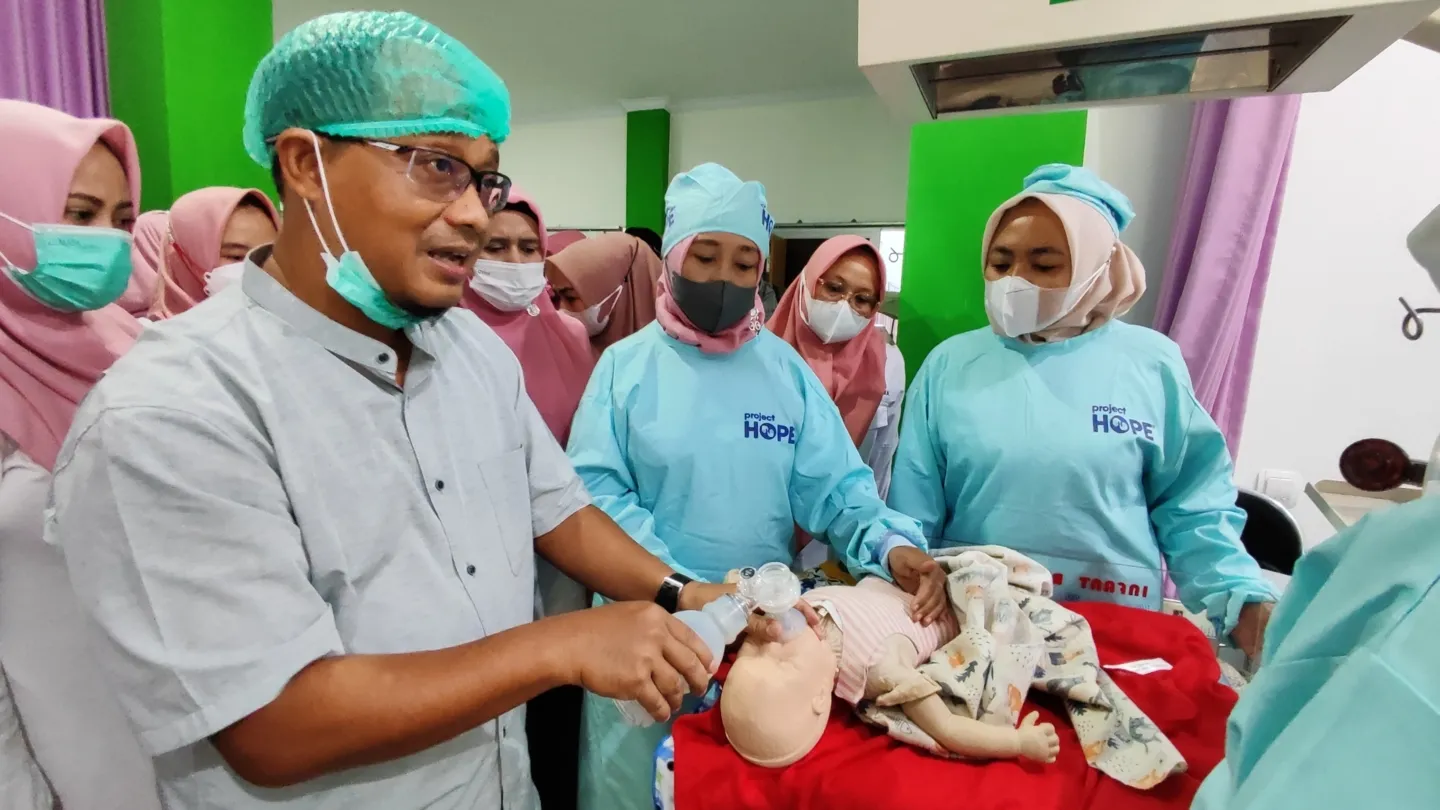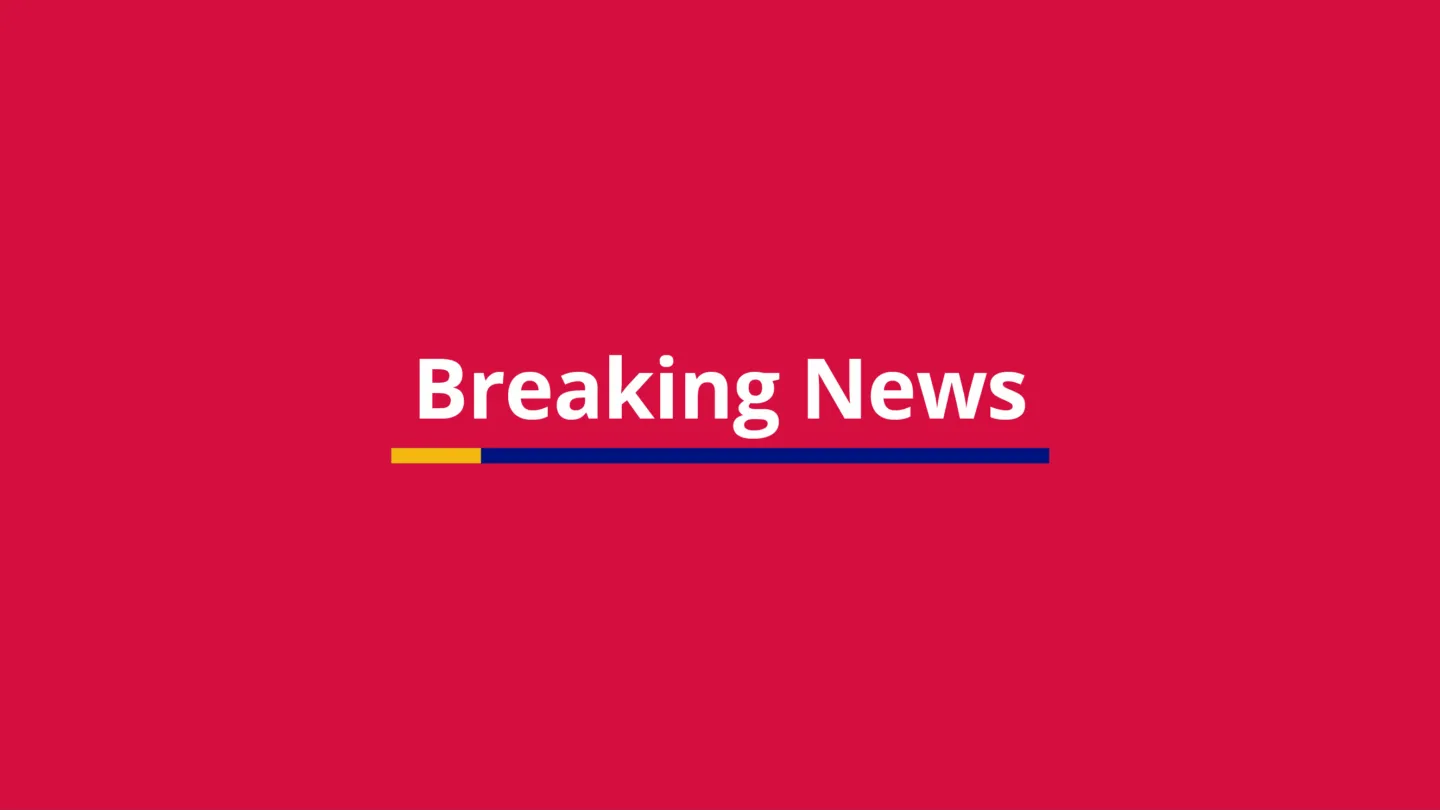Photo Essay: In Serang, Midwives Stand in the Gap
In western Java, just a few hours from the metropolis of Jakarta, villages in rural Serang struggle with a tragic and preventable problem: maternal and neonatal mortality.

For many women in Serang, the health network connecting villages to formal care is too expensive or too far away. Small village clinics, called posyandus, report up to public health centers, called puskesmas — clean, well-equipped facilities that are staffed to handle deliveries. Serang’s puskesmas are key to reducing the district’s high mortality rates, but many women forgo them to deliver at home using dangerous traditional practices.
Project HOPE saw a way to help bridge the gap: supporting the puskesmas with new equipment and training midwives and volunteers to walk alongside women throughout pregnancy and delivery. Volunteers meet with new mothers every month during pregnancy, encourage them to deliver in the puskesmas, hold monthly wellness clinics in villages and check in frequently to make sure new mothers are breastfeeding and immunizing their newborns.
Midwives, meanwhile, are more prepared to deliver lifesaving care for women who need it most. Since 2016, this training has made the difference between life and death for more than 85,000 mothers and 11,000 newborns.
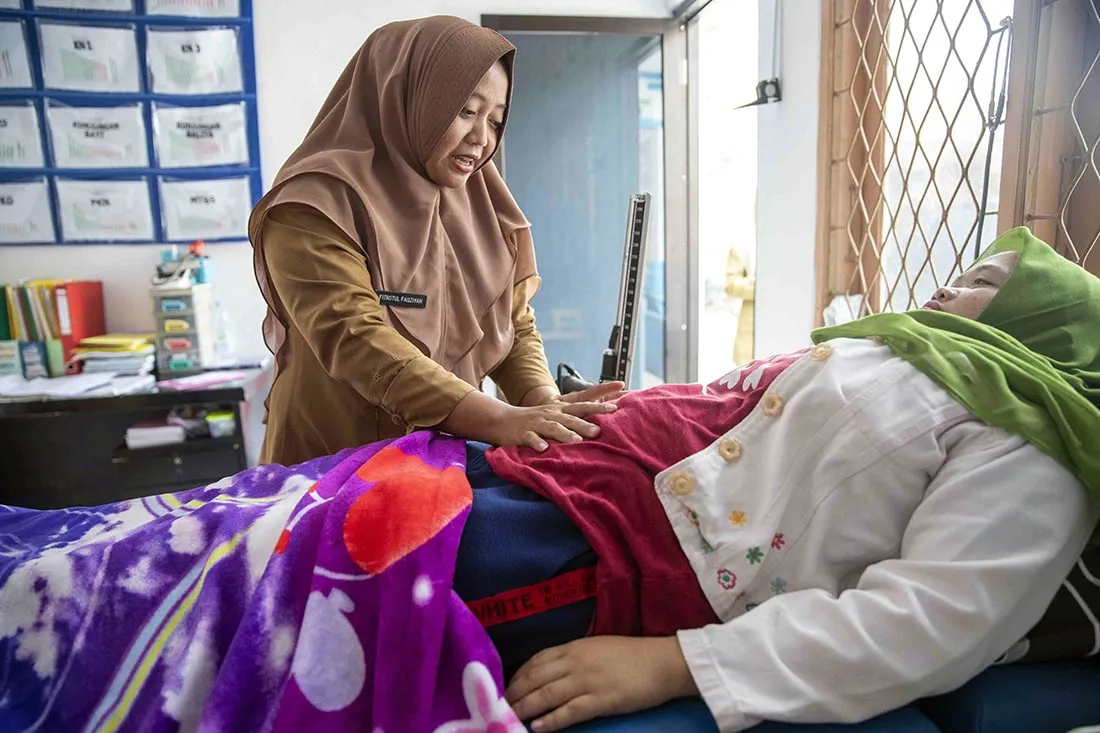
Een, 23, gets a checkup from Fitrotful, a midwife at her local puskesmas in the village of Cisalam. Een is three months pregnant with her first baby and today is her first visit to the health care facility. Midwives here see about 10-15 mothers per day and are a huge benefit for women like Een, who otherwise might consider relying on unsafe cultural traditions outside the formal health care system.
Een has a cold, so Fitrotful checks her vitals, gives her folic acid tablets, orders a lab test and tells her to eat fruits and vegetables and get plenty of rest until her next visit.
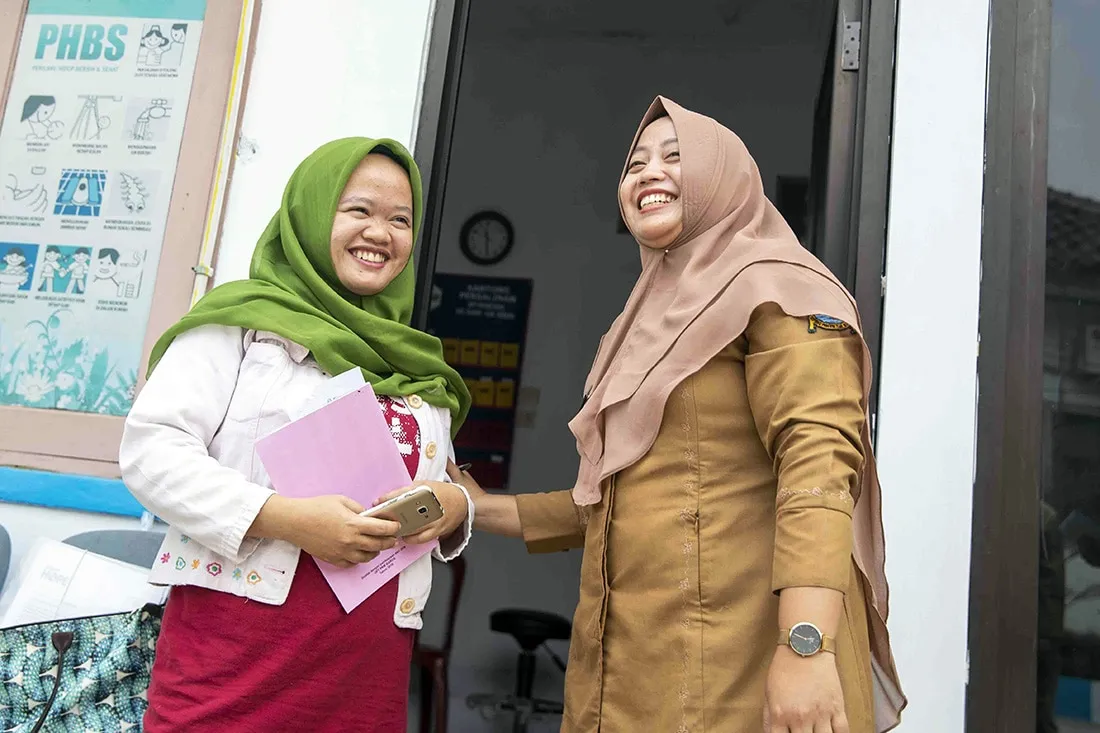
Fitrotful, 30, has been a midwife since 2011 and has delivered about 2,000 babies in her career. A few years ago, she took a training offered by Project HOPE on neonatal asphyxia care to refresh her skills as a midwife. Not long after, a mother came into the clinic in the midst of delivering a baby with asphyxia. Fitrotful applied her training and saved the baby’s life. “I was feeling panic about the baby’s state,” she says, “but thanks to the training I felt calm and confident in taking care of the case.”
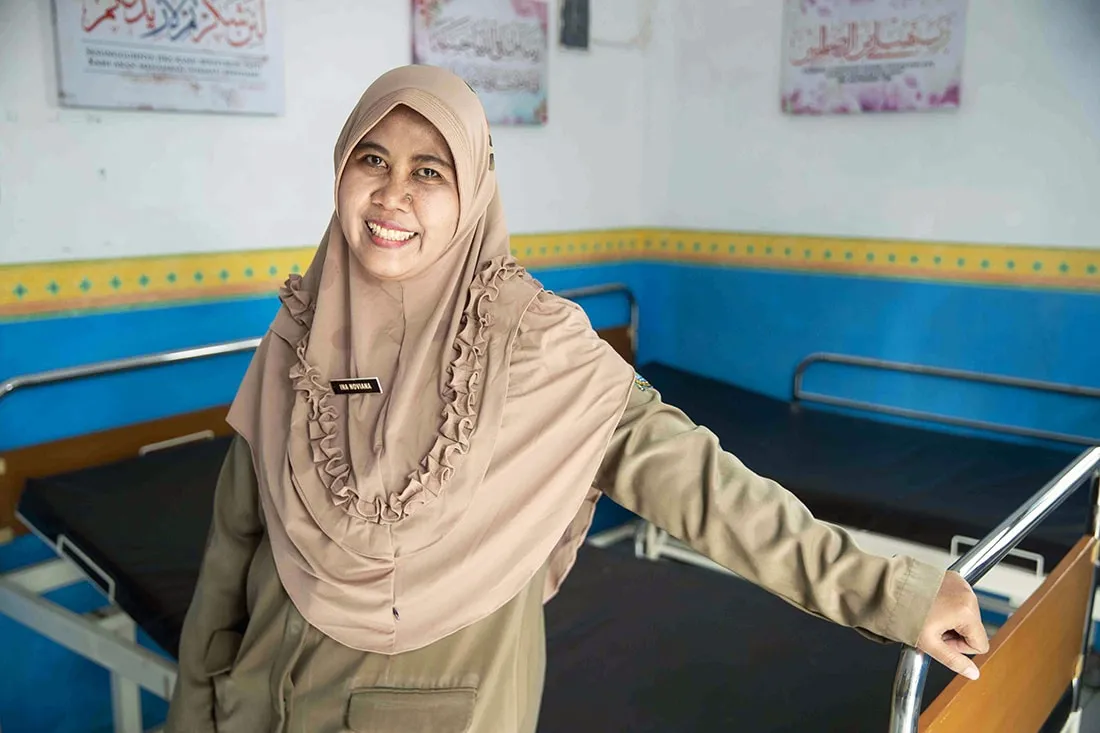
Ina, 44, has been a midwife since 1999 and attended a Project HOPE training to update her skills — skills that were put to the test shortly after when a patient came to the puskesmas with a baby in breech presentation.
Ina did a physical exam and checked the woman’s vital signs, then she gave her an IV and oxygen and applied the Bracht maneuver, which she learned in the training. “He was born healthy, at a normal weight,” she says. “I felt excited and happy.”

Project HOPE supported nine puskesmas in Serang with training and equipment, including an infant warmer to help keep underweight babies warm. The trainings helped improve the skills of midwives and volunteers, while the equipment helped bring facilities up to date. “The nine puskesmas that worked with HOPE are better and stronger,” says Dr. Sri Nurhayati, the head of Serang’s District Health Office. “We saw many improvements from our partnership.”
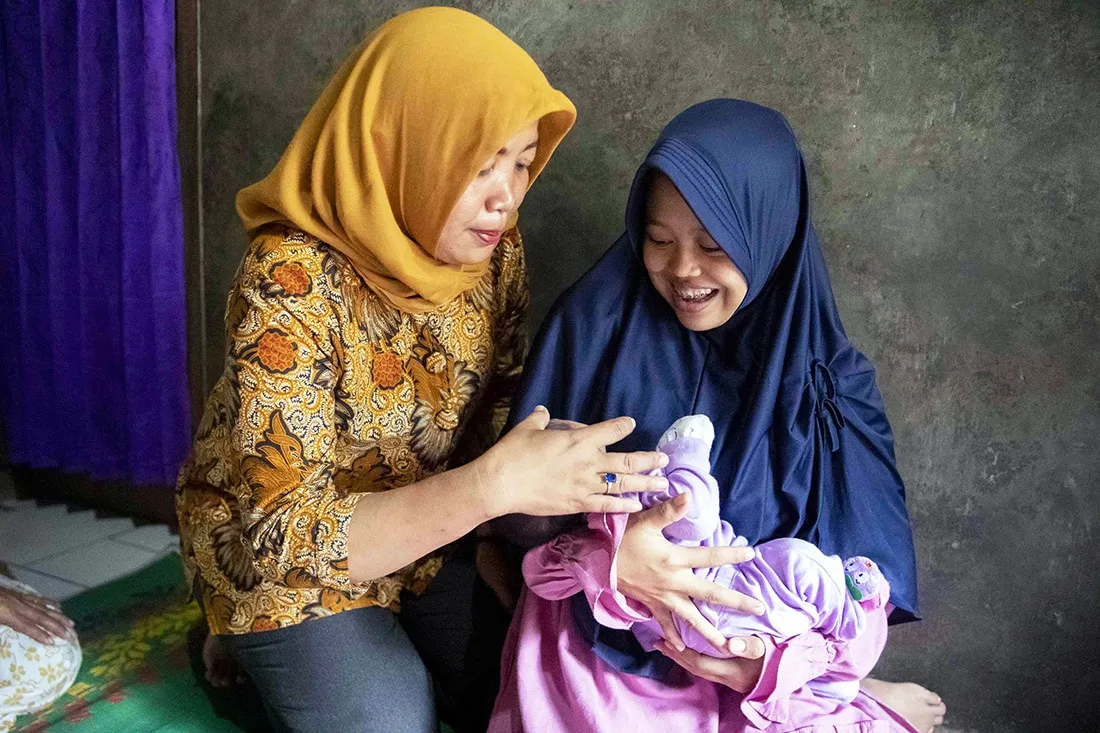
Eka, 24, and her 1-month-old daughter, Putri, get a visit from Susi, a volunteer supported by Project HOPE. Volunteers are a crucial lifeline for women like Eka — they visit them throughout their pregnancy, encourage them to go to the health center for delivery and then follow up afterward to make sure they are breastfeeding and taking their children for vaccinations and checkups. Susi has come to Eka’s home three times in the last month to check on the baby’s umbilical cord and show Eka how to bathe her and change her diapers.
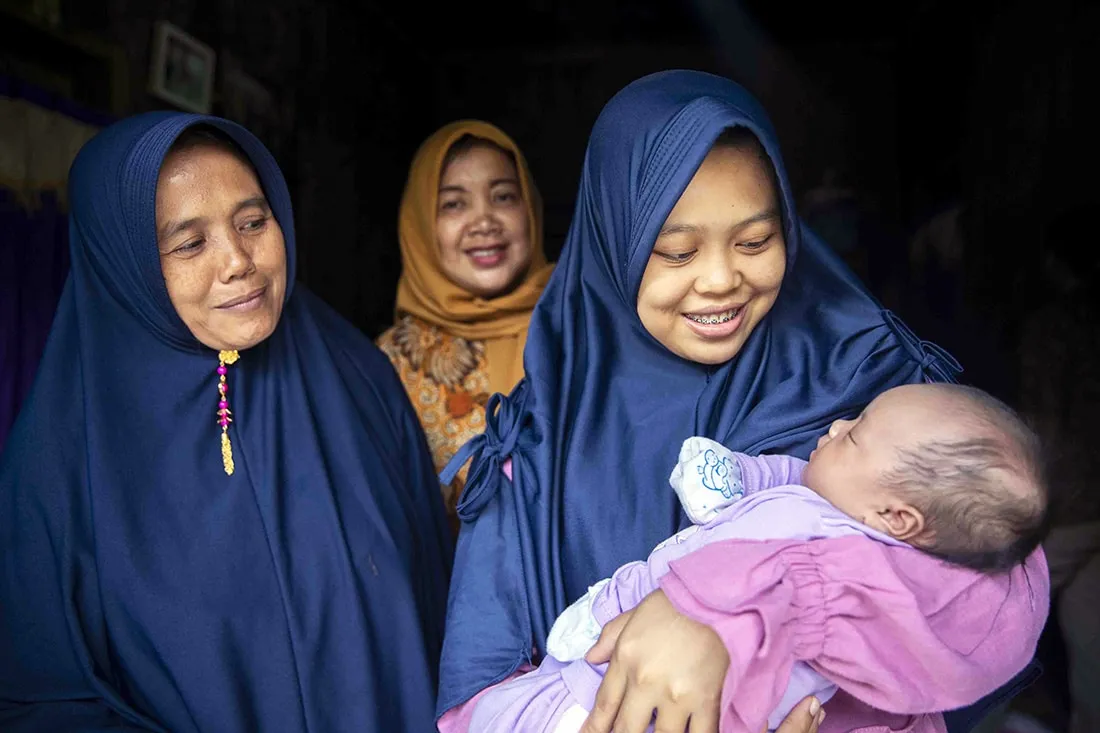
This is Eka’s first child, and without Susi’s support, she says she would have been confused and afraid throughout the process. “When I delivered, she went with me,” says Eka, joined here by her mother, Mudanah. “I found it difficult, especially because this is my first time, so I had some worries.”
“[Without Susi] I would be afraid and confused about everything. The companionship of a volunteer is important.”
– First-time-mother Eka, 24
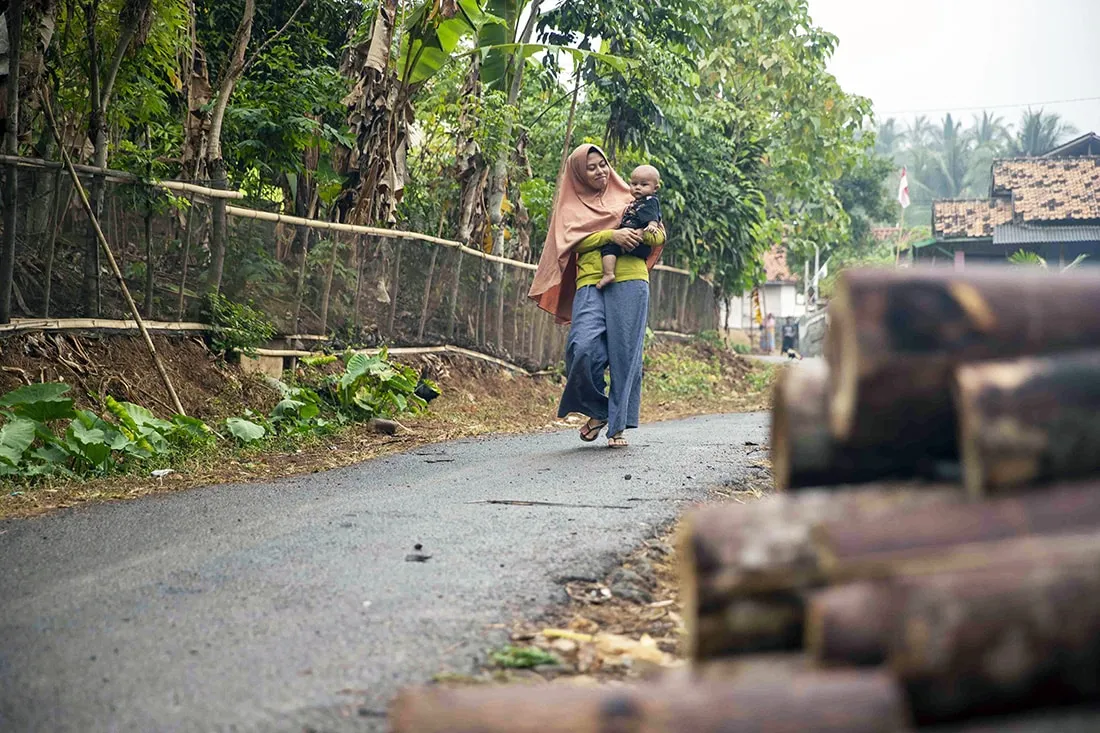
Asih, 25, makes her way to a monthly baby/child wellness event put on by volunteers and midwives from the local clinic in her village. Once a month, the posyandu, or village clinic, invites mothers throughout the village to receive wellness checks for their children to ensure they are healthy, growing and gaining weight. Normally, it would take Asih 30 minutes by motorbike to reach her doctor; today, it’s just a 10-minute walk.
“The volunteers are kind,” Asih says. “They direct me to good things. They suggested I come to the health outpost during pregnancy. I received routine care, which otherwise I would have received from my parents.”
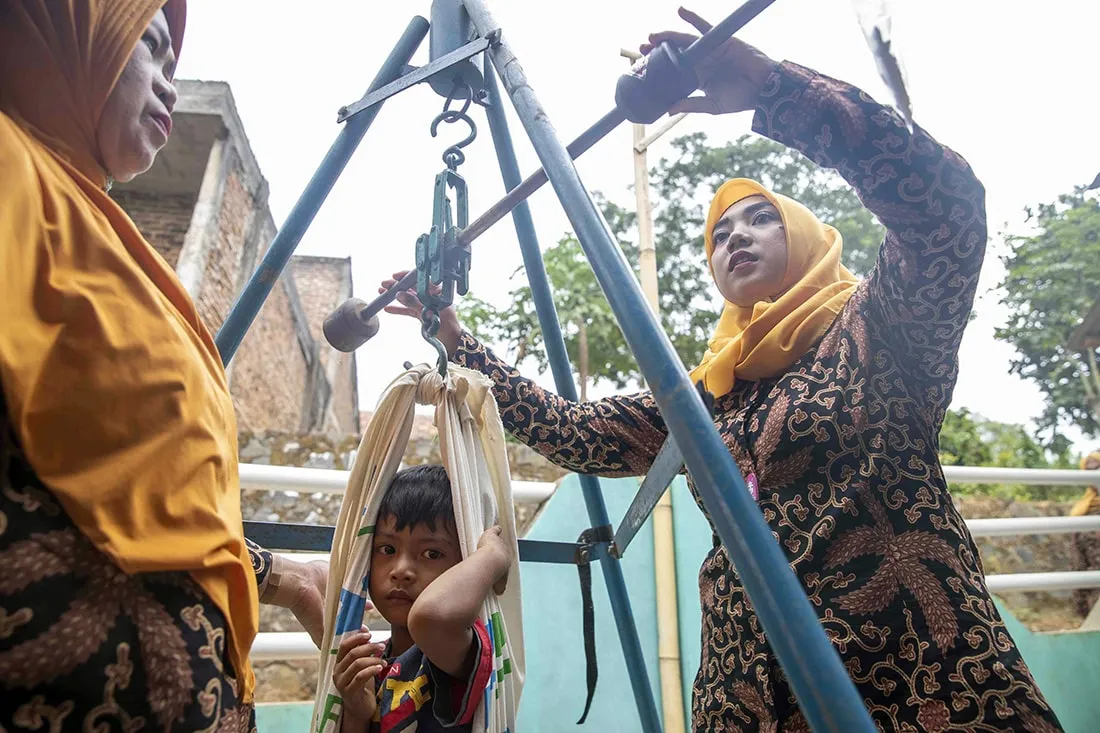
Volunteers play a crucial role in the health care system in this part of Indonesia, officials say, as they stand in the gap between villages and formal health care facilities. At the monthly wellness events, volunteers like these use scales to weigh babies and children to make sure their growth is on track.
“Volunteers are the front line for the public health office,” says Dr. Andah Suryani, head of the family health division of the public health office in Serang. “They refer patients to the public health center and the outposts, and they help the midwives. … They are our health warriors.”
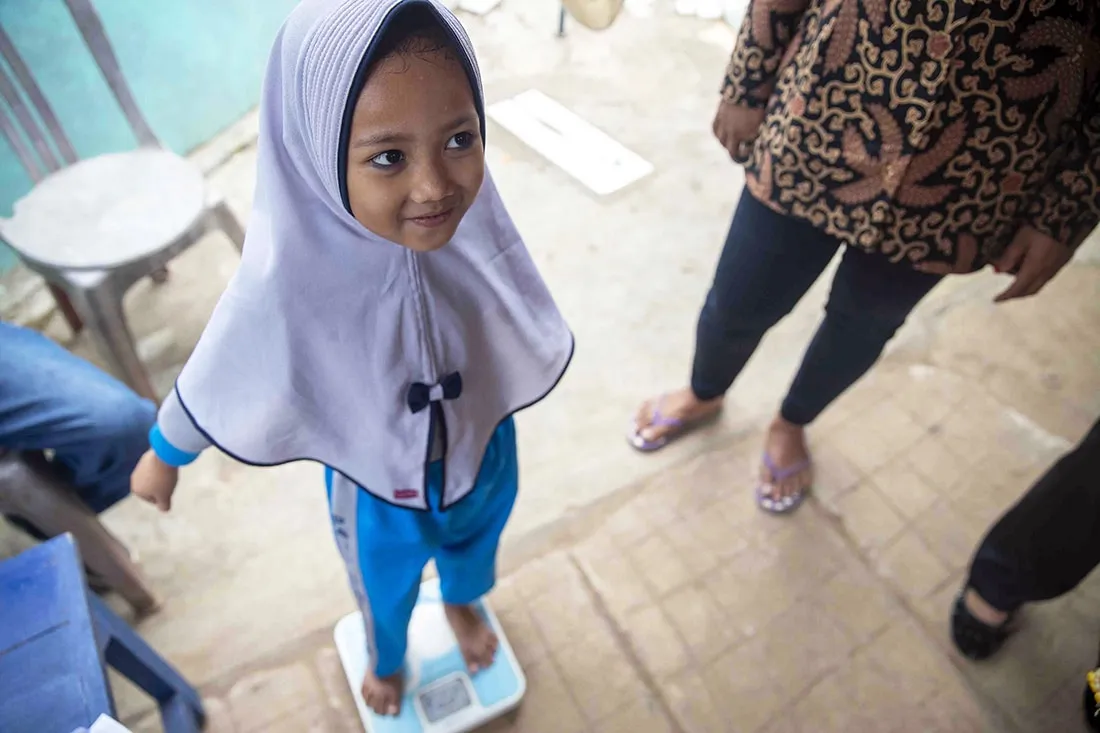
More than 60 midwives, volunteers, mothers, babies and children turned out to the August wellness event. Events like these are important to help keep women and children plugged into the health network, officials say, which has in turn lowered the mortality rate.
“Deliveries in the puskesmas are increasing,” says Dr. Yatni Suprapti Nafisah, head of the public health center this local clinic reports to. “Previously, more mothers delivered at home. But it’s important because at the puskesmas we have full equipment, it’s hygienic and we have more health workers.”
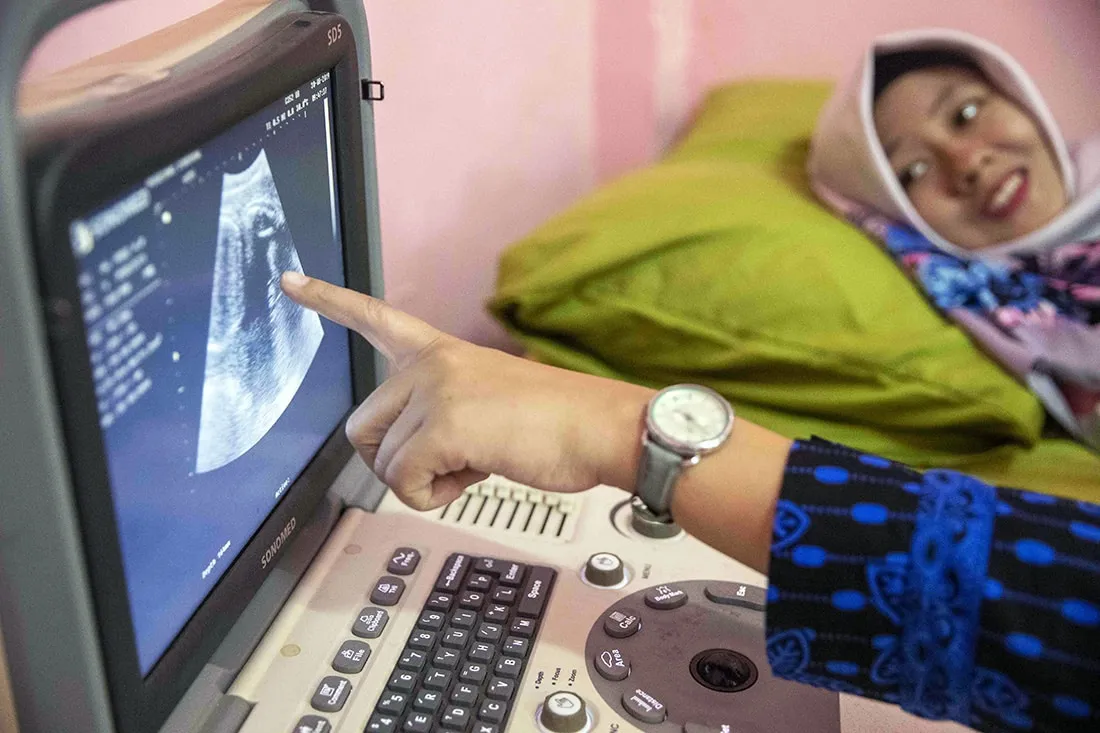
Siti, 21, is due to deliver her first baby in one month and has been coming to the public health clinic for routine checkups throughout her pregnancy. She also joined a pregnancy class led by a midwife and volunteers. “The class is fun; I meet my friends there,” she says. “I learned about the delivery process and exercises for pregnant women. They reminded me to take iron tablets and to get a tetanus vaccination. The most important information I learned was about the delivery process — I learned not to push too early.”
Today, she can go home happy: everything on her sonogram looks great. “I am happy especially that the baby is healthy,” she says. “I can feel the baby kicking in my tummy.”
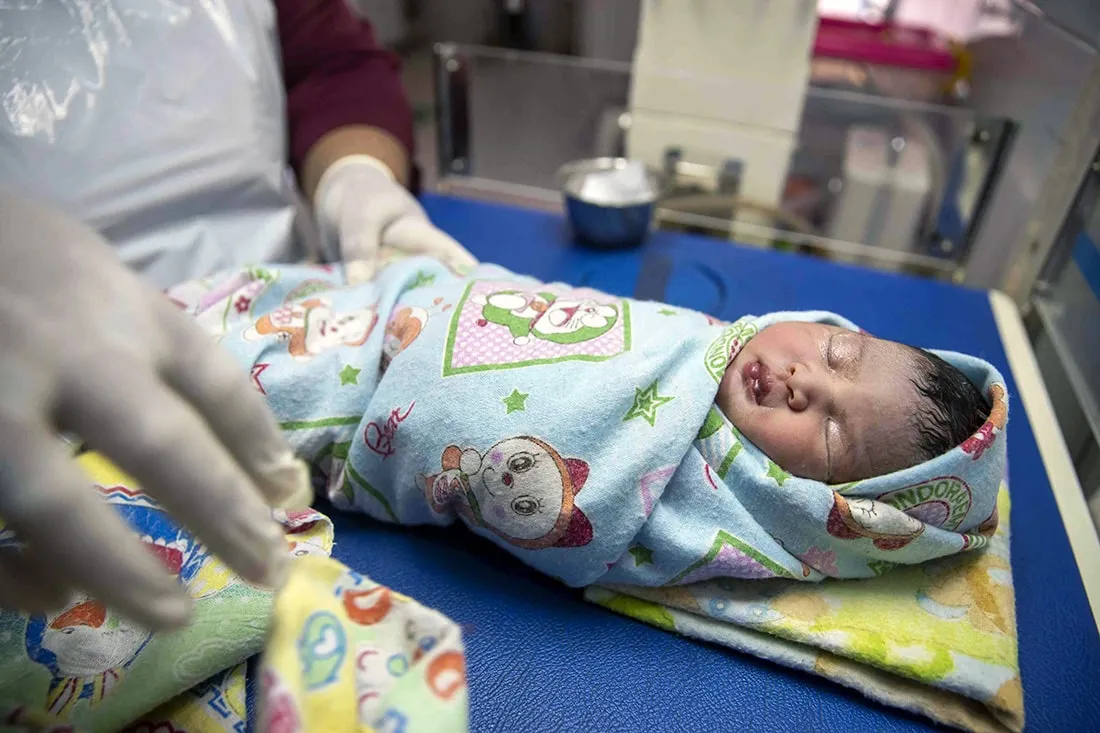
A healthy two-hour-old baby girl with no name yet rests in a baby warmer donated by Project HOPE. In addition to trainings, Project HOPE provided puskesmas with vital equipment like incubators, thermometers, blood pressure equipment, sonogram machines and delivery room tools. “Before, people didn’t care about neonatal care or bring their babies in for weight checks and vaccinations,” says Dr. Diah S. Viand, who oversees staff at the puskesmas. “Now 85% of new babies are brought in for weight checks.”
“Project HOPE helped us build our skill and competency.”
– Dr. Diah S. Viand
Project HOPE’s work in Indonesia dates back to 1960, during the maiden voyage of the SS HOPE. Since 2005, we have implemented highly successful maternal, newborn and child health programs in Banda Aceh, Nagan Raya, and Aceh Barat, reducing maternal and neonatal mortality by training health center staff and village midwives on basic and essential maternal and newborn care. In 2012, our programs expanded to support women in the workplace and to provide diabetes education for primary care physicians.

